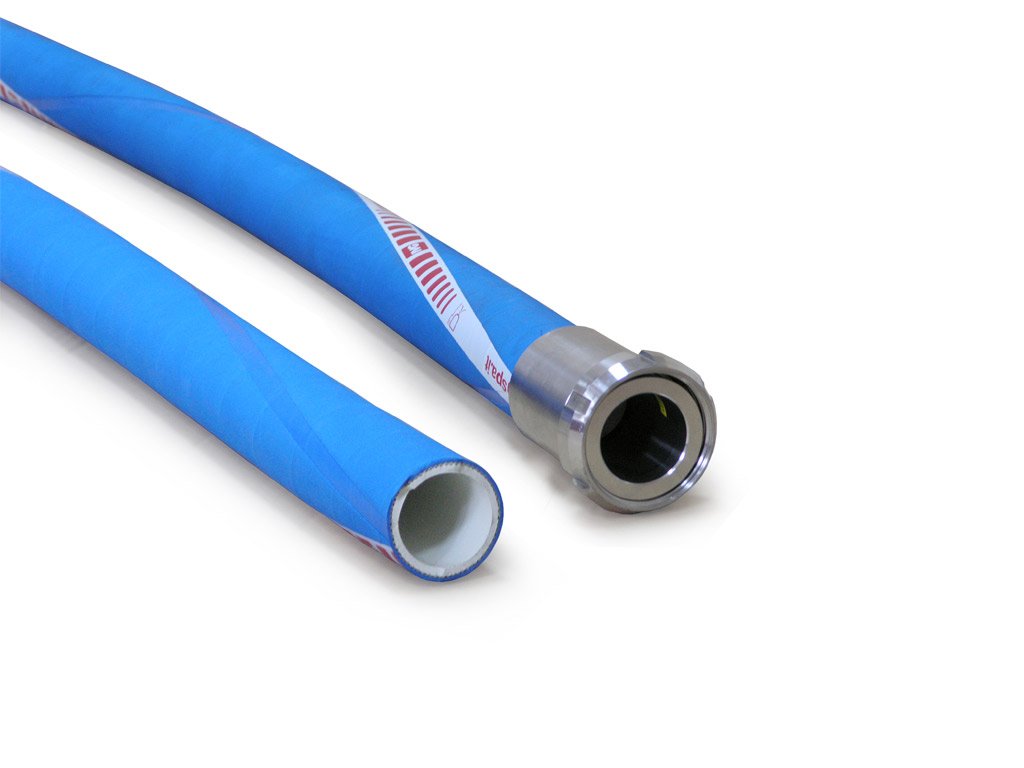If you need a hose to transport food or drink, you will need a food-grade hose.
This particular type of hose will help preserve the quality and integrity of food and drink, as well as keep it safe from contamination.
Food-grade hoses can carry wet food like beer, oil or dairy products, as well as dry food like flour, minced meat, spices and sugar.
Where are food-grade hoses found?
You can find food grade hoses anywhere that food or drink needs to be transported. These hoses are commonly found in the food manufacturing industry as well as pubs and breweries.
They can also be used to carry fragrances and pharmaceuticals, as food-grade hoses have been specially designed not to impart any strong smells or tastes onto the products that they carry.
Food-grade hoses can also be found in motorhomes and caravans, to carry potable (drinkable) water.
What are food-grade hoses made from?
Food grade hoses need to be flexible, durable and easy to clean, as well as be able to maintain pressure to keep things moving. This is especially important in a manufacturing environment where produce needs to be on the move constantly.
As consumable products are involved, food-grade hoses must be fully compliant with EU regulations, particularly (EU) No.10/2011 and (EC) No.1935/2004. It is critical that the hose is non-toxic and does not pass any harmful chemicals through to the food and drink that passes through it. If the hose has a strong odour, it could give the food or drink an off-putting smell or flavour.
Food-grade hoses can in stainless steel fittings, but are not made from other metals, as metal corrosion could potentially contaminate the produce in the hose.
Different lengths and diameters of hoses are available depending on requirements and the foodstuff that needs to pass through the hose.
Food grade hoses are generally manufactured from three different types of material, each with unique properties that are ideal for different types of food products:
Polyvinyl chloride (PVC): PVC hoses are the standard choice for food grade hoses as they are light and can withstand temperatures from -20°C to +60°C. They are suitable for transporting potable water and soft drinks but are not suitable for use with fatty foods as they are not resistant enough. PVC hoses are usually transparent, so you can see what is in the hose, or whether there is any contamination.
Polytetrafluoroethylene (PTFE): PTFE hoses can withstand high pressure as well as temperatures between -70°C to +260°C so are suitable for use with flavourings. These hoses are easier to clean than PVC hoses but are more costly.
Polyurethane: Polyurethane is resistant to fatty foods as well as abrasive foods like spices and other dry ingredients. These hoses are not as temperature resistant as PTFE hoses though, with a temperature range of between -40°C to +90°C.
If a hose coupling needs to be used to connect the hose to something, for example, a tank or filling machine, there are two different options, brass or stainless steel.
A clamp is typically used on hoses that can tolerate low pressure, for higher pressures a swaged fitting will be required, or a sanitary coupling can be used in a manufacturing environment.
Clamps are cheaper and more flexible to use, but sanitary couplings are more hygienic as bacteria cannot easily gather on them.











